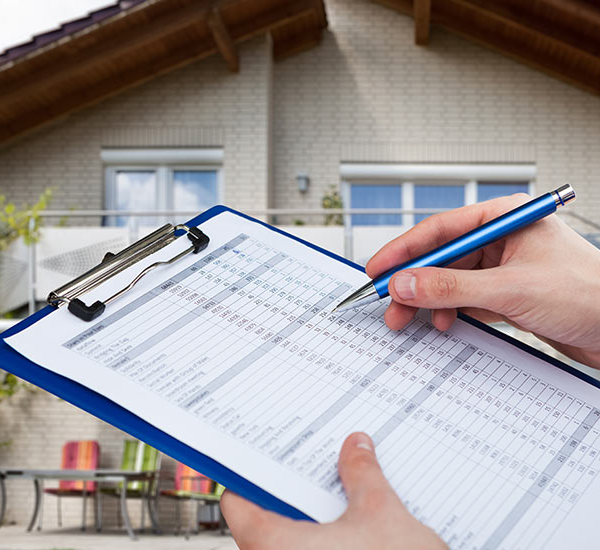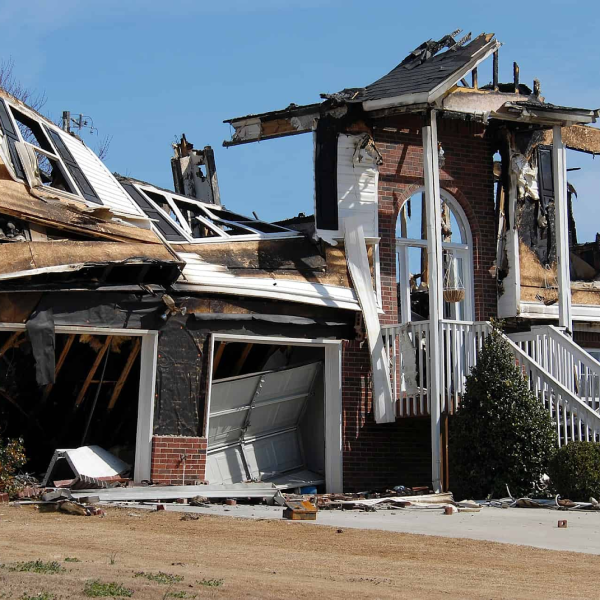
Storm Recovery Guide
What Homeowners Need to Do Next
When a storm strikes, the aftermath can be overwhelming. From assessing damages to initiating repairs, the process of recovery can feel daunting. However, with a well-structured plan and the right information, homeowners can navigate this challenging time efficiently. In this guide, we’ll explore the critical steps homeowners need to take to recover from a storm, ensuring their safety and the swift restoration of their property.
 Ensure Safety First
Ensure Safety First
The first and most important step after a storm is to ensure the safety of everyone in your household. Depending on the severity of the storm, there may be downed power lines, broken glass, or flooding that can pose immediate dangers.
- Stay Away from Hazardous Areas: Avoid downed power lines and report them to the local utility company. Steer clear of standing water, especially if it’s near electrical sources, as it could be electrically charged.
- Check for Gas Leaks: If you smell gas or suspect a leak, leave the area immediately and call your gas company from a safe location. Avoid using any open flames or electrical appliances that could spark an explosion.
- Use Caution When Re-entering Your Home: After ensuring the exterior is safe, carefully inspect the inside of your home for structural damage. If you suspect your home is unstable, wait for a professional assessment before entering.
Document the Damage  Thorough documentation is crucial for insurance claims and for ensuring that all necessary repairs are identified.
Thorough documentation is crucial for insurance claims and for ensuring that all necessary repairs are identified.
- Take Photos and Videos: Capture clear images and videos of the damage from multiple angles. This includes structural damage, broken windows, roof issues, and any damaged personal belongings.
- Create a Detailed Inventory: List all damaged items along with their estimated value.
If possible, locate receipts or credit card statements as proof of purchase. - Keep a Record of Conversations: Document any conversations with insurance representatives, contractors, and other professionals involved in the recovery process. This can help avoid misunderstandings and ensure all parties are on the same page.
 Contact Your Insurance Company
Contact Your Insurance Company
After documenting the damage, your next step should be to contact your insurance company to start the claims process.
- Report the Damage Promptly: Many insurance policies require that claims be filed within a certain time frame after the damage occurs, so don’t delay.
- Provide Detailed Information: Be prepared to provide all necessary documentation, including photos, videos, and your inventory of damaged items. The more information you provide, the smoother the claims process will be.
- Understand Your Coverage: Familiarize yourself with your policy’s coverage limits, deductibles, and any exclusions. This will help set expectations for what costs the insurance company will cover.
Secure Your Property Before repairs begin, it’s important to secure your property to prevent further damage and protect against theft.
Before repairs begin, it’s important to secure your property to prevent further damage and protect against theft.
- Cover Openings: Use tarps, plywood, or other materials to cover any holes in the roof, broken windows, or other vulnerable areas.
- Remove Debris: Clear away fallen branches, broken glass, and other debris from your property. However, be cautious around large debris or items that may be unstable.
- Board Up Windows: If any windows are shattered or compromised, boarding them up can prevent water and debris from entering your home.
 Hire Reputable Contractors
Hire Reputable Contractors
Once your property is secure and your insurance claim is underway, it’s time to start repairs. Hiring reputable contractors is essential to ensure quality work and avoid further issues down the line.
- Research and Vet Contractors: Look for licensed, insured contractors with good reviews and a solid reputation. Avoid door-to-door contractors offering quick fixes, as these can often be scams.
- Get Multiple Quotes: Obtain at least three quotes from different contractors to compare prices and services. Be wary of significantly low estimates, which could indicate subpar work or hidden fees.
- Avoid Upfront Payments: While it’s common for contractors to request a deposit, avoid paying the full amount upfront. Make payments in stages as work is completed and verified.
Focus on Immediate Repairs While it might be tempting to dive into larger home improvement projects, prioritize immediate repairs that address safety and prevent further damage.
While it might be tempting to dive into larger home improvement projects, prioritize immediate repairs that address safety and prevent further damage.
- Roof Repairs: Address any leaks or structural damage to your roof to prevent water from seeping into your home.
- Electrical Systems: Have a licensed electrician inspect your home’s electrical systems, especially if there was flooding or water damage.
- Plumbing and HVAC Systems: Check for leaks, blockages, and damage to your plumbing and HVAC systems. Repairing these systems promptly can prevent water damage and ensure your home remains livable.
 Understand the Rebuilding Process
Understand the Rebuilding Process
Depending on the extent of the damage, rebuilding your home might involve more than just repairs. It’s important
to understand the rebuilding process and what it entails.
- Permits and Inspections: Many repairs and rebuilds will require permits and inspections from local authorities. Make sure your contractor handles these details and complies with all local building codes.
- Upgrading Your Home: If significant portions of your home need rebuilding, consider making upgrades that could improve your home’s value, energy efficiency, and storm resilience.
- Timeline and Expectations: Rebuilding can be a lengthy process, so it’s important to set realistic expectations. Work closely with your contractor to establish a timeline and stay informed about the progress of the work.
Prepare for Future Storms After your home has been repaired or rebuilt, take steps to prepare for future storms. Being proactive can help minimize damage and make recovery easier next time.
After your home has been repaired or rebuilt, take steps to prepare for future storms. Being proactive can help minimize damage and make recovery easier next time.
- Invest in Storm-Resistant Features: Consider upgrading to impact-resistant windows, reinforced doors, and a stronger roof. These features can help protect your home from future storms.
- Create an Emergency Plan: Develop a family emergency plan that includes evacuation routes, a communication plan, and a designated meeting spot. Practice the plan regularly so everyone knows what to do in the event of a storm.
- Maintain Insurance Coverage: Regularly review your insurance policy to ensure you have adequate coverage for storm damage. Consider adding flood insurance if you live in a high-risk area.
Recovering from a storm can be a challenging and emotional experience, but with the right approach, you can restore your home and regain a sense of normalcy. By prioritizing safety, documenting damage, working closely with your insurance company, and hiring reputable contractors, you can navigate the recovery process with confidence. And by taking steps to prepare for future storms, you can protect your home and loved ones from future disasters.
Remember, recovery is a marathon, not a sprint, but with patience and perseverance, you’ll get through it.



